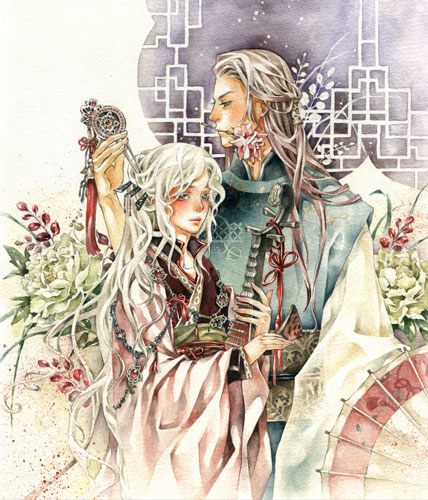
On this survey of mythological birds across the world, we now reach China. The Feng Huang is often referred to as the “Chinese Phoenix”, but similarities between the two mythological birds are “no more than superficial” – if Wikipedia can be trusted.
The article on Wikipedia sums it up thus: “Fenghuang (simplified Chinese: 凤凰; traditional Chinese: 鳳凰; pinyin: fènghuáng) are mythological birds of East Asia that reign over all other birds. The males were originally called feng and the females huang but such a distinction of gender is often no longer made and they are blurred into a single feminine entity so that the bird can be paired with the Chinese dragon, which is deemed male.”
“The fenghuang is also called the “August Rooster” (simplified Chinese: 鹍鸡; traditional Chinese: 鶤雞; pinyin: kūnjī) since it sometimes takes the place of the Rooster in the Chinese zodiac.” [Source: Wikipedia]
Like the Persian Simurgh and the Indian Garuda, the Feng Huang is also often shown defeating snakes. Citing Wikipedia again, “according to the Erya’s chapter 17 Shiniao, fenghuang is made up of the beak of a rooster, the face of a swallow, the forehead of a fowl, the neck of a snake, the breast of a goose, the back of a tortoise, the hindquarters of a stag and the tail of a fish.[1] Today, however, it is often described as a composite of many birds including the head of a golden pheasant, the body of a mandarin duck, the tail of a peacock, the legs of a crane, the mouth of a parrot, and the wings of a swallow.”
The artistic depictions I have found generally take a rather liberal approach to this meticulous description. The bird is often shown with a rooster or pheasant like head, and peacock inspired tail feathers, but what happens in-between is mostly up to the artist’s individual inspiration. Depictions range from the brightly colourful to the ethereal, though generally, the bird has a rather sturdy body – unlike depictions of the Western Phoenix, who often takes a distinctly gothic shape.
The symbolic meanings associated with the Feng Huang are manifold. The bird has very positive connotations of virtue and grace, and is particularly strongly associated with the balance between yin and yang: be it in the original pairing of a male Feng and female Huang bird, or in the later pairing of the (now entirely female) Fenghuang with the male dragon.
The phoenix-and-dragon pair is a very ancient and well loved motif in Chinese ceramics, and particularly associated with weddings, and with royalty. Feng or fenghuang is also a common element in girl’s given names, and indeed the Fenghuang can be personified as a woman. Lastly, like the Western Phoenix, it is also a symbol for new beginnings.
Unlike the Indian Garuda, whom I featured on my last blog, the Fenghuang seems to be quite popular with artists from the USA. In fact, Asian artists are in the minority this time: a piece each from Malaysia and Indonesia, a collaboration from Vietnam, but none from China – though of course some of the artists from other countries may well be ethnic Chinese. But apparently this bird is also popular with artists from Mexico, The Netherlands, Eastern Europe, and Australia.
















All images are copyright the respective artists, and may not be reproduced without permission.










